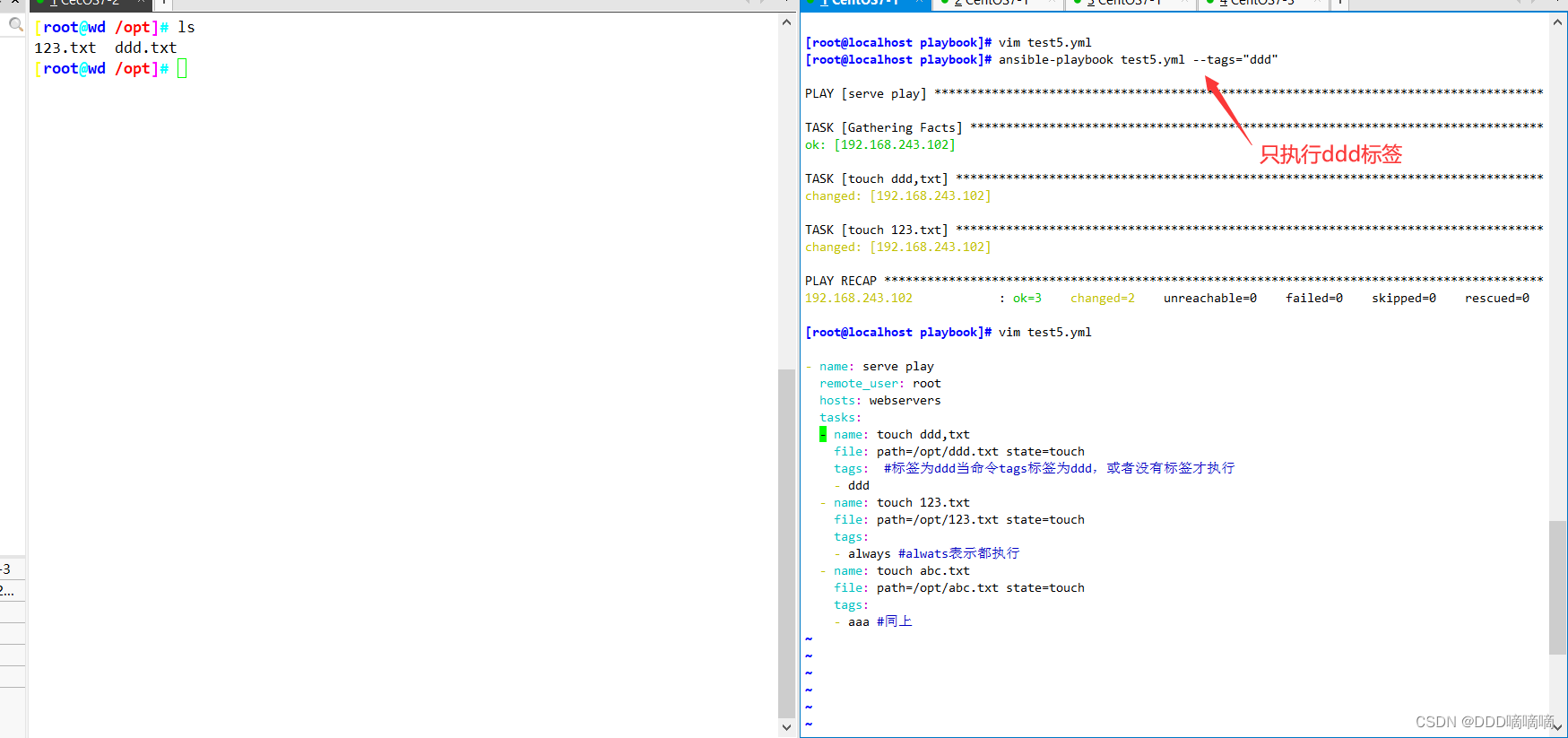目录
一、Ansible 的脚本 playbook 剧本
1.1playbooks的组成
(1)Tasks:任务,即通过 task 调用 ansible 的模板将多个操作组织在一个 playbook 中运行
(2)Variables:变量
(3)Templates:模板
(4)Handlers:处理器,当changed状态条件满足时,(notify)触发执行的操作
(5)Roles:角色
二、剧本编写实验
vim test1.yaml
--- #yaml文件以---开头,以表明这是一个yaml文件,可省略
- name: first play #定义一个play的名称,可省略
gather_facts: false #设置不进行facts信息收集,这可以加快执行速度,可省略
hosts: webservers #指定要执行任务的被管理主机组,如多个主机组用冒号分隔
remote_user: root #指定被管理主机上执行任务的用户
tasks: #定义任务列表,任务列表中的各任务按次序逐个在hosts中指定的主机上执行
- name: test connection #自定义任务名称
ping: #使用 module: [options] 格式来定义一个任务
- name: disable selinux
command: '/sbin/setenforce 0' #command模块和shell模块无需使用key=value格式
ignore_errors: True #如执行命令的返回值不为0,就会报错,tasks停止,可使用ignore_errors忽略失败的任务
- name: disable firewalld
service: name=firewalld state=stopped #使用 module: options 格式来定义任务,option使用key=value格式
- name: install httpd
yum: name=httpd state=latest
- name: install configuration file for httpd
copy: src=/opt/httpd.conf dest=/etc/httpd/conf/httpd.conf #这里需要一个事先准备好的/opt/httpd.conf文件
notify: "restart httpd" #如以上操作后为changed的状态时,会通过notify指定的名称触发对应名称的handlers操作
- name: start httpd service
service: enabled=true name=httpd state=started
handlers: #handlers中定义的就是任务,此处handlers中的任务使用的是service模块
- name: restart httpd #notify和handlers中任务的名称必须一致
service: name=httpd state=restarted
##Ansible在执行完某个任务之后并不会立即去执行对应的handler,而是在当前play中所有普通任务都执行完后再去执行handler,这样的好处是可以多次触发notify,但最后只执行一次对应的handler,从而避免多次重启。
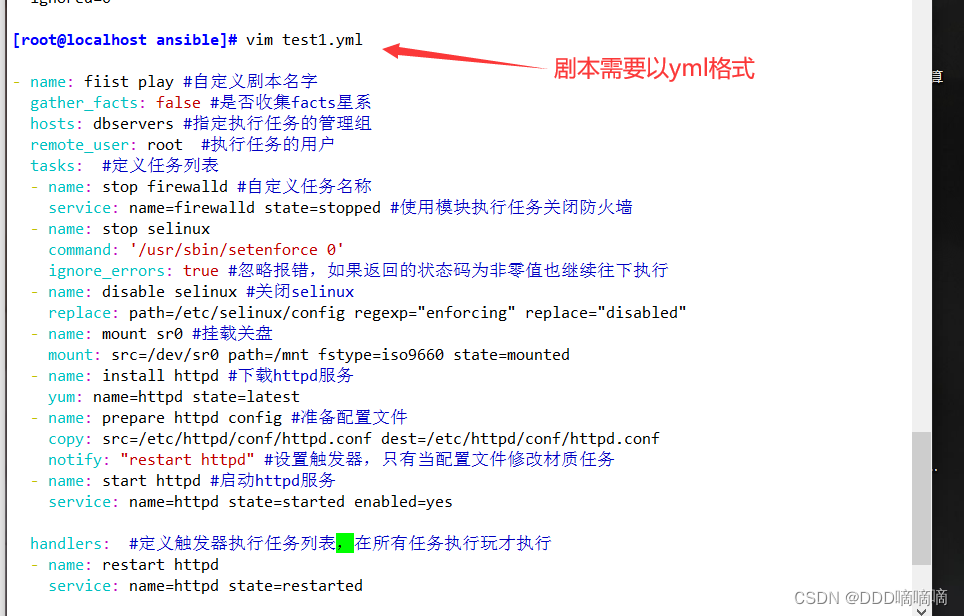
运行playbook
ansible-playbook test1.yaml
//补充参数:
-k(–ask-pass):用来交互输入ssh密码
-K(-ask-become-pass):用来交互输入sudo密码
-u:指定用户
ansible-playbook test1.yaml --syntax-check #检查yaml文件的语法是否正确
ansible-playbook test1.yaml --list-task #检查tasks任务
ansible-playbook test1.yaml --list-hosts #检查生效的主机
ansible-playbook test1.yaml --start-at-task='install httpd' #指定从某个task开始运行
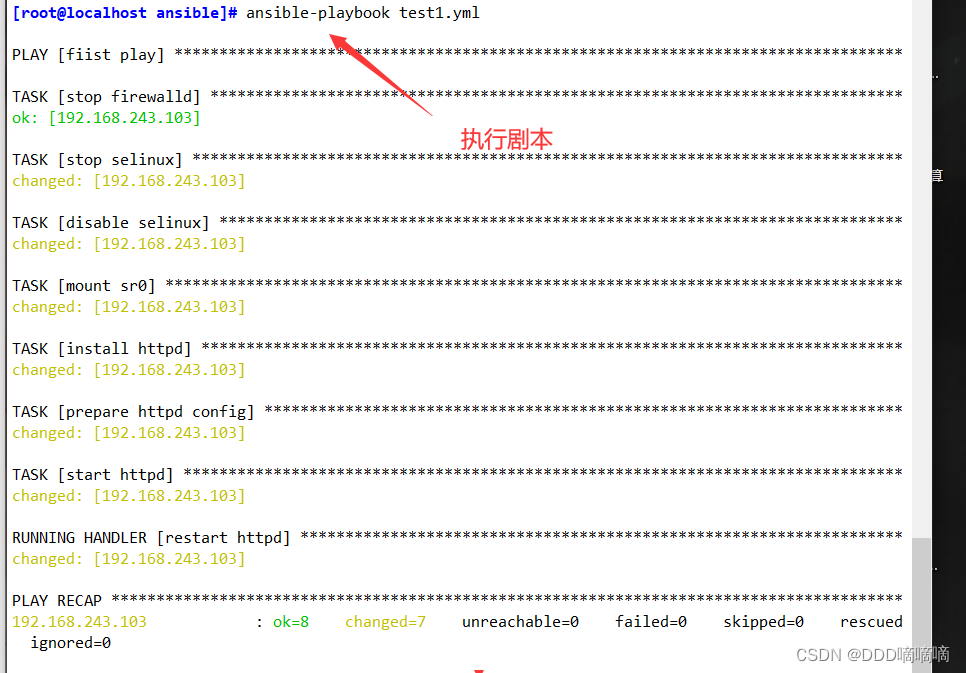
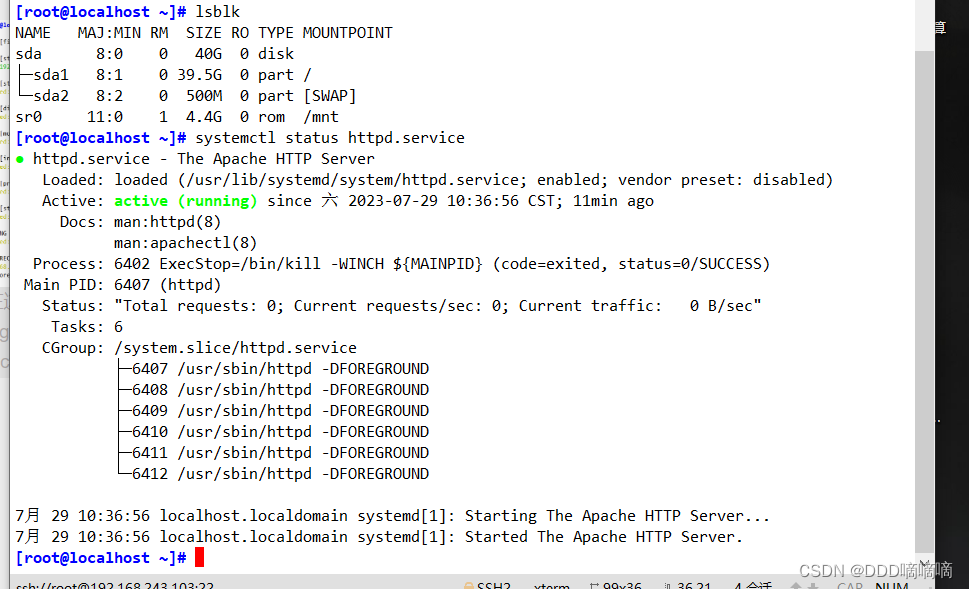
2.1定义、引用变量
- name: second play
hosts: dbservers
remote_user: root
vars: #定义变量
- groupname: mysql #格式为 key: value
- username: nginx
tasks:
- name: create group
group: name={
{
groupname}} system=yes gid=306 #使用 {
{key}} 引用变量的值
- name: create user
user: name={
{
username}} uid=306 group={
{
groupname}}
- name: copy file
copy: content="{
{ansible_default_ipv4}}" dest=/opt/vars.txt #在setup模块中可以获取facts变量信息
ansible-playbook test1.yaml -e "username=nginx" #在命令行里定义变量
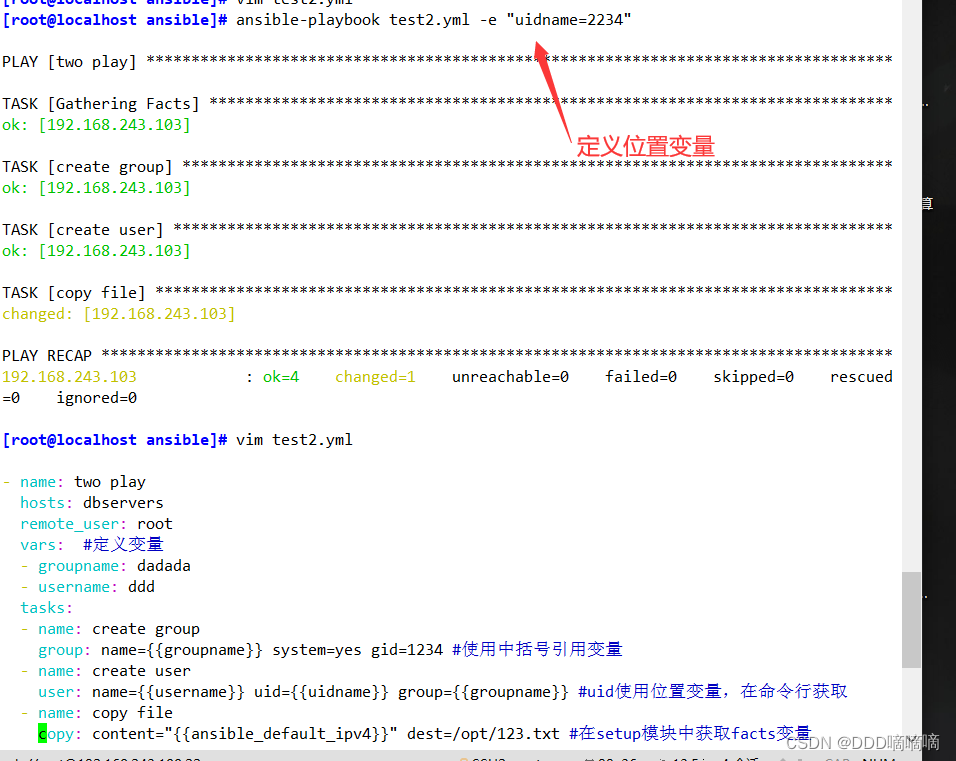
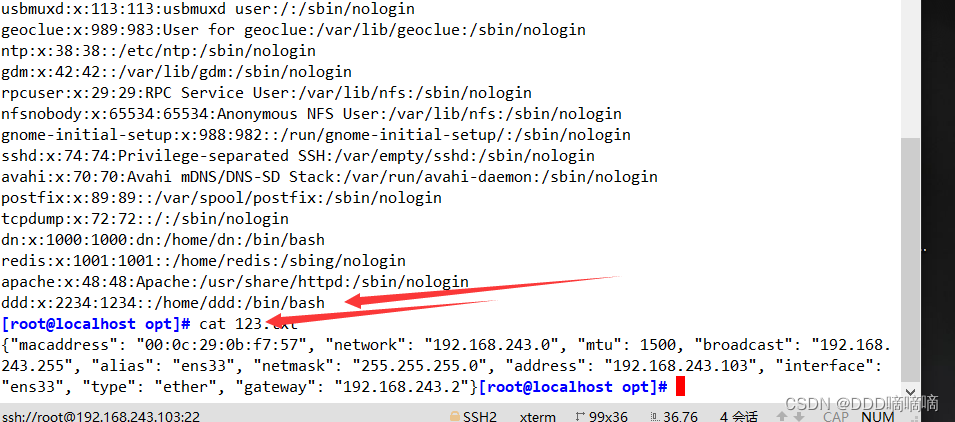
2.2使用远程主机sudo切换用户
- hosts: dbservers
remote_user: zhangsan
become: yes #2.6版本以后的参数,之前是sudo,意思为切换用户运行
become_user: root #指定sudo用户为root
执行playbook时:ansible-playbook test1.yml -k -K
2.3whenn条件判断
- name: three play
hosts: all
remote_user: root
tasks:
- name: create file
file: path=/opt/abc.txt state=touch
when: ansible_default_ipv4.address=="192.168.243.103" #通过facts收集的信息过滤出匹配的主机,when中的变量名字,不需要手动加{
{}}
或
when: inventory_hostname == "<主机名>"
ansible-playbook test2.yaml
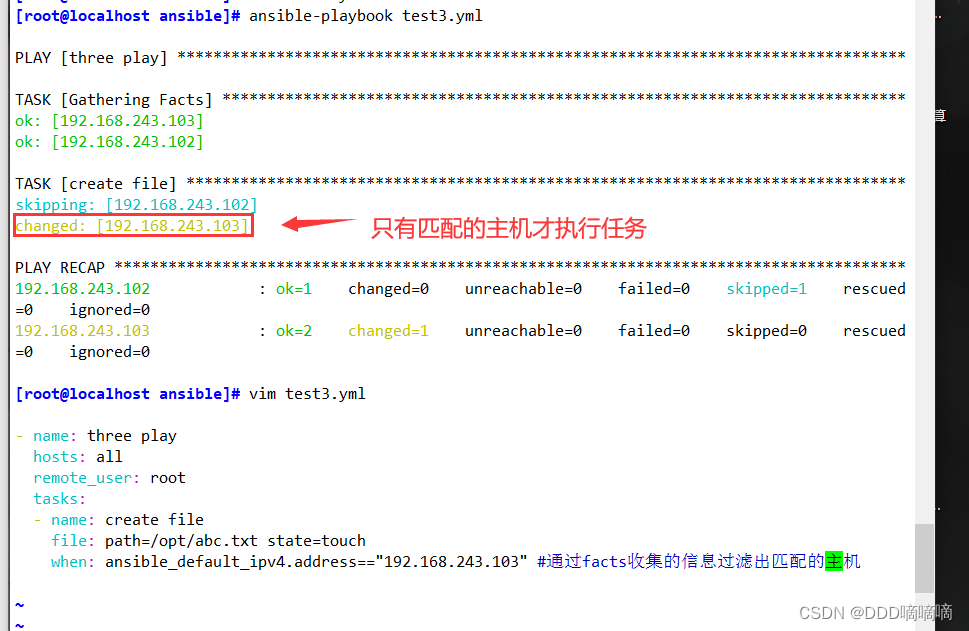
2.4迭代
- Ansible提供了很多种循环结构,一般都命名为with_items,作用等同于 loop 循环。
- name: play1
hosts: dbservers
gather_facts: false
tasks:
- name: create file
file:
path: "{
{item}}"
state: touch
with_items: [ /opt/a, /opt/b, /opt/c, /opt/d ]
- name: play2
hosts: dbservers
gather_facts: false
vars:
test:
- /tmp/test1
- /tmp/test2
- /tmp/test3
- /tmp/test4
tasks:
- name: create directories
file:
path: "{
{item}}"
state: directory
with_items: "{
{test}}"
- name: play3
hosts: dbservers
gather_facts: false
tasks:
- name: add users
user: name={
{
item.name}} state=present groups={
{
item.groups}}
with_items:
- name: test1
groups: wheel
- name: test2
groups: root
或
with_items:
- {
name: 'test1', groups: 'wheel'}
- {
name: 'test2', groups: 'root'}
ansible-playbook test3.yaml
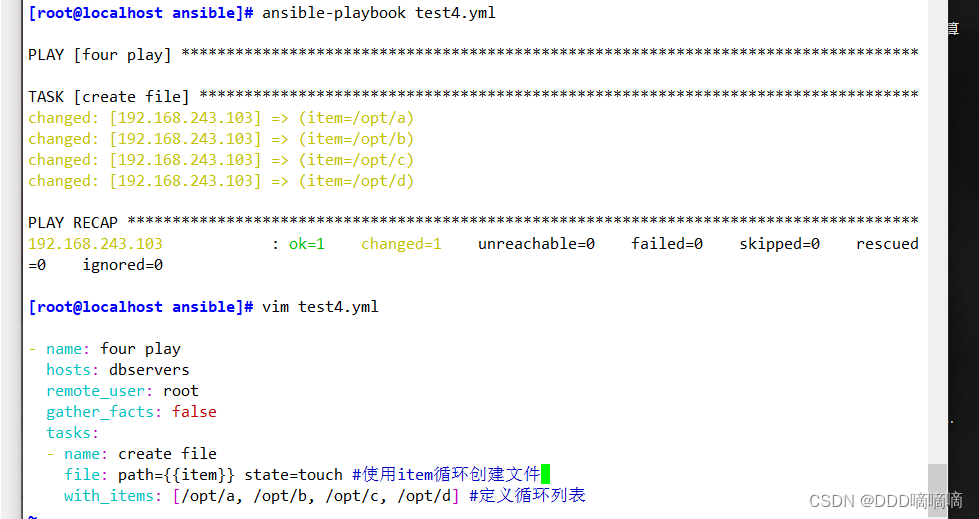
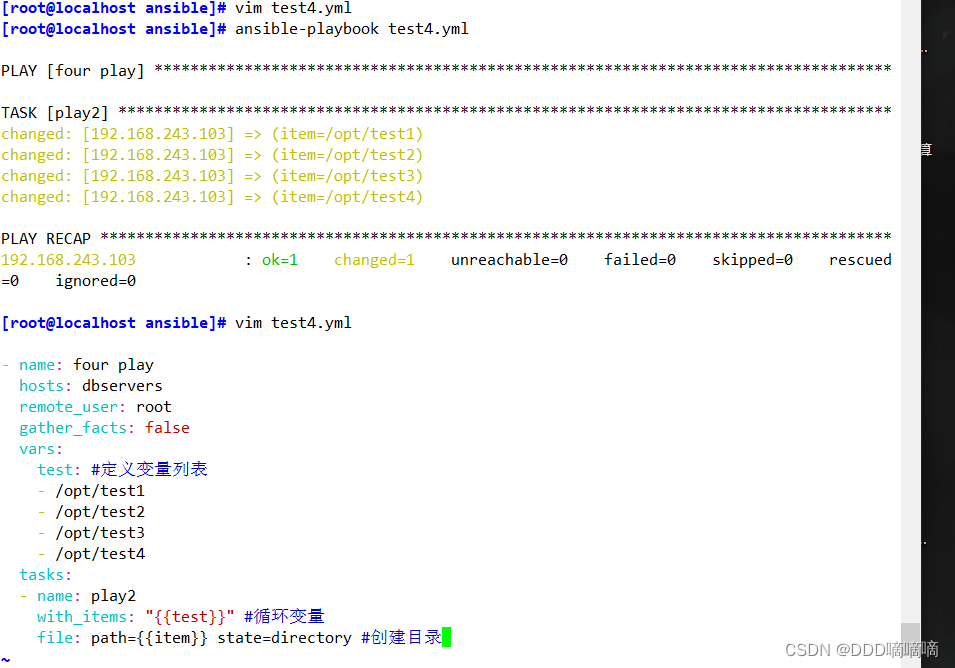
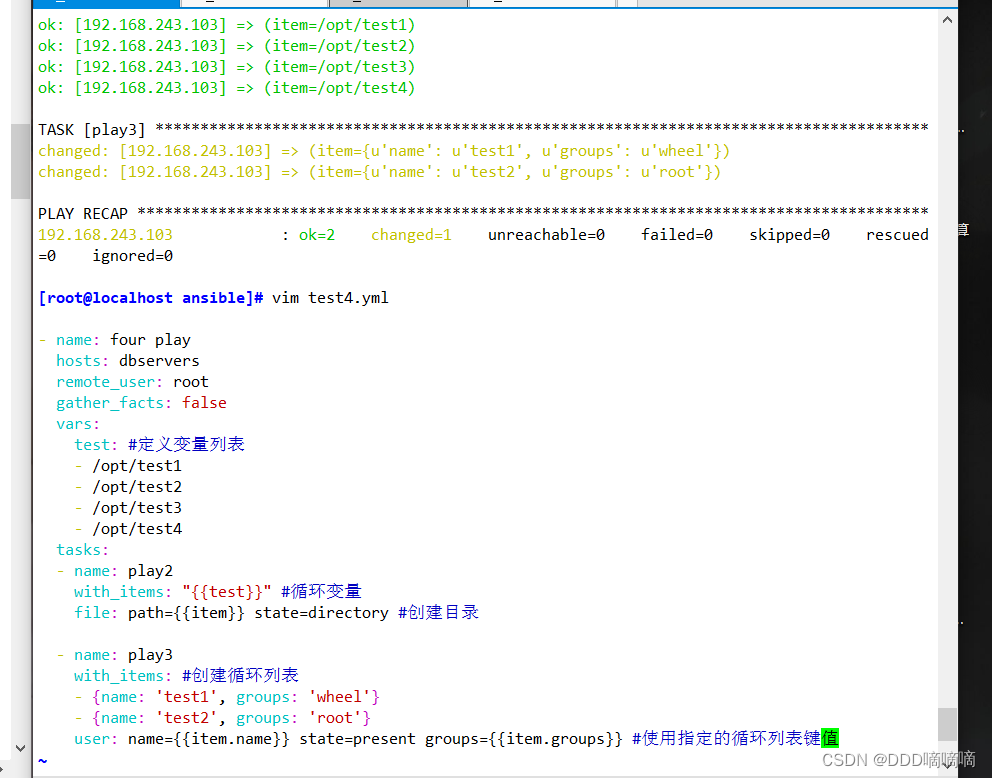
三、Templates 模板
- Jinja是基于Python的模板引擎。Template类是Jinja的一个重要组件,可以看作是一个编译过的模板文件,用来产生目标文本,传递Python的变量给模板去替换模板中的标记。
1.先准备一个以 .j2 为后缀的 template 模板文件,设置引用的变量
cp /etc/httpd/conf/httpd.conf /opt/httpd.conf.j2
vim /opt/httpd.conf.j2
Listen {
{
http_port}} #42行,修改
ServerName {
{
server_name}} #95行,修改
DocumentRoot "{
{root_dir}}" #119行,修改
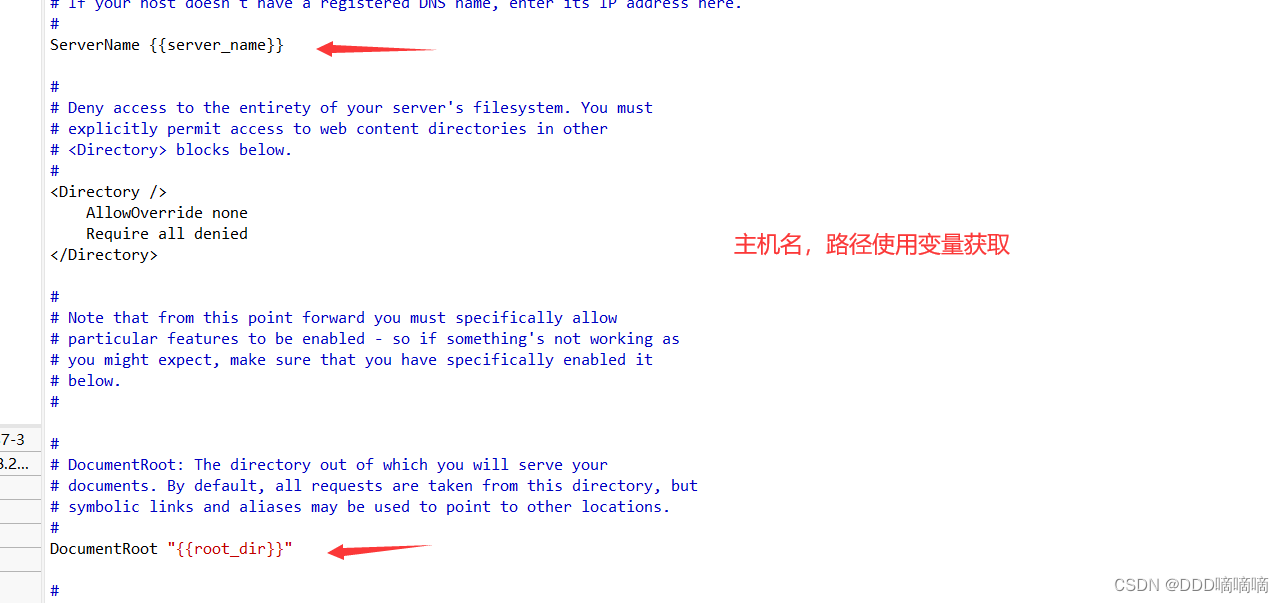
2.修改主机清单文件,使用主机变量定义一个变量名相同,而值不同的变量
vim /etc/ansible/hosts
[webservers]
192.168.80.11 http_port=192.168.80.11:80 server_name=www.accp.com:80 root_dir=/etc/httpd/htdocs
[dbservers]
192.168.80.12 http_port=192.168.80.12:80 server_name=www.benet.com:80 root_dir=/etc/httpd/htdocs
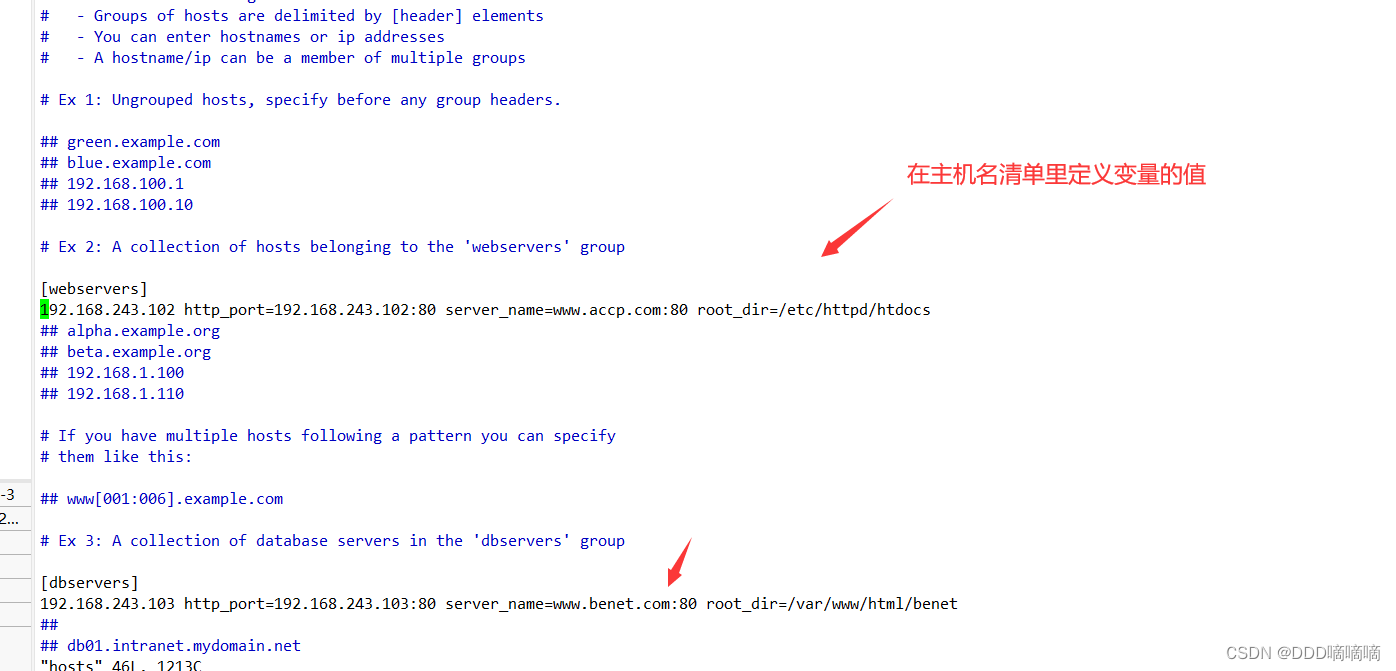
3.编写 playbook
vim apache.yaml
---
- hosts: all
remote_user: root
vars:
- package: httpd
- service: httpd
tasks:
- name: install httpd package
yum: name={
{
package}} state=latest
- name: install configure file
template: src=/opt/httpd.conf.j2 dest=/etc/httpd/conf/httpd.conf #使用template模板
notify:
- restart httpd
- name: create root dir
file: path=/etc/httpd/htdocs state=directory
- name: start httpd server
service: name={
{
service}} enabled=true state=started
handlers:
- name: restart httpd
service: name={
{
service}} state=restarted
ansible-playbook apache.yaml
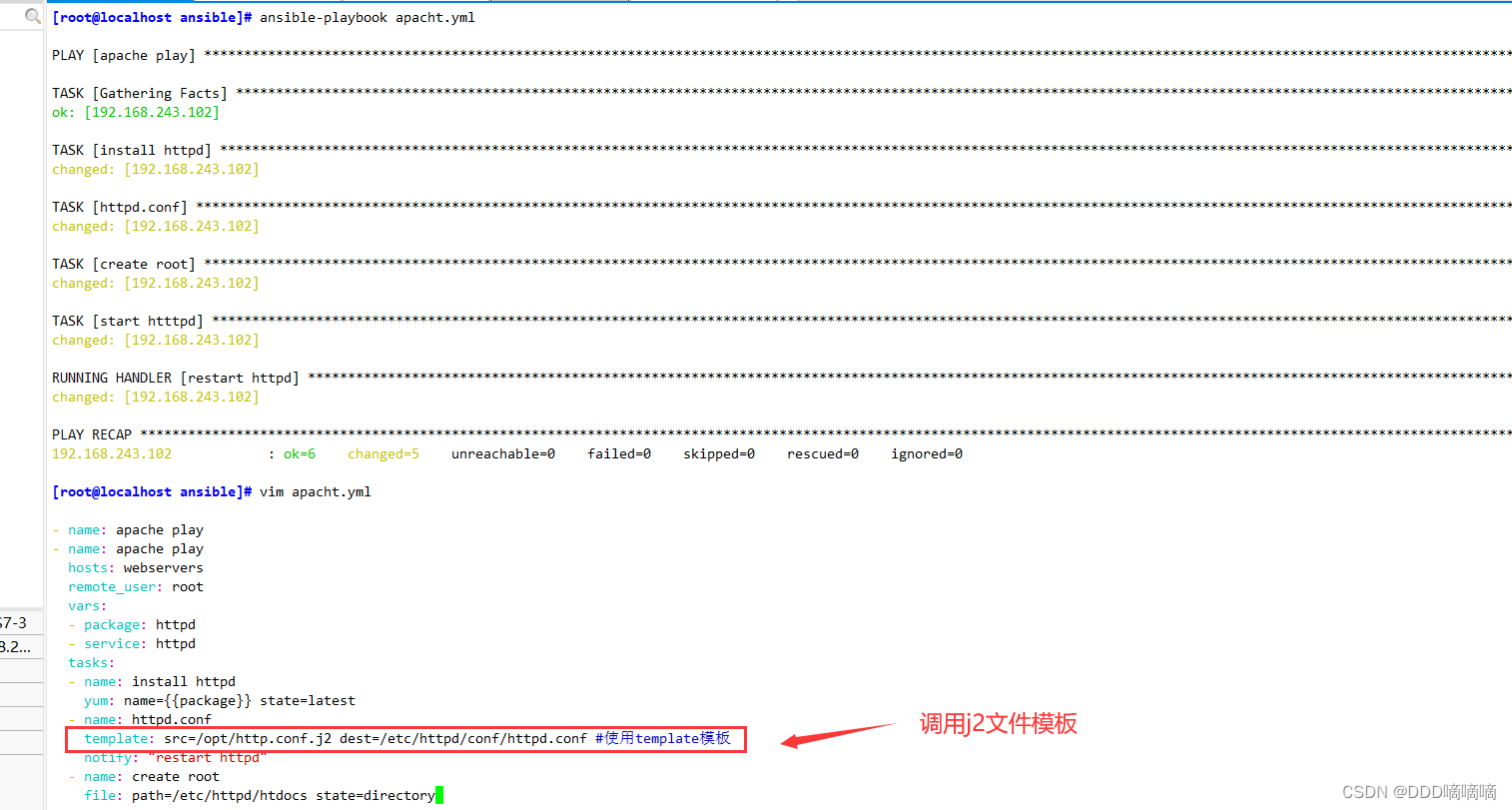
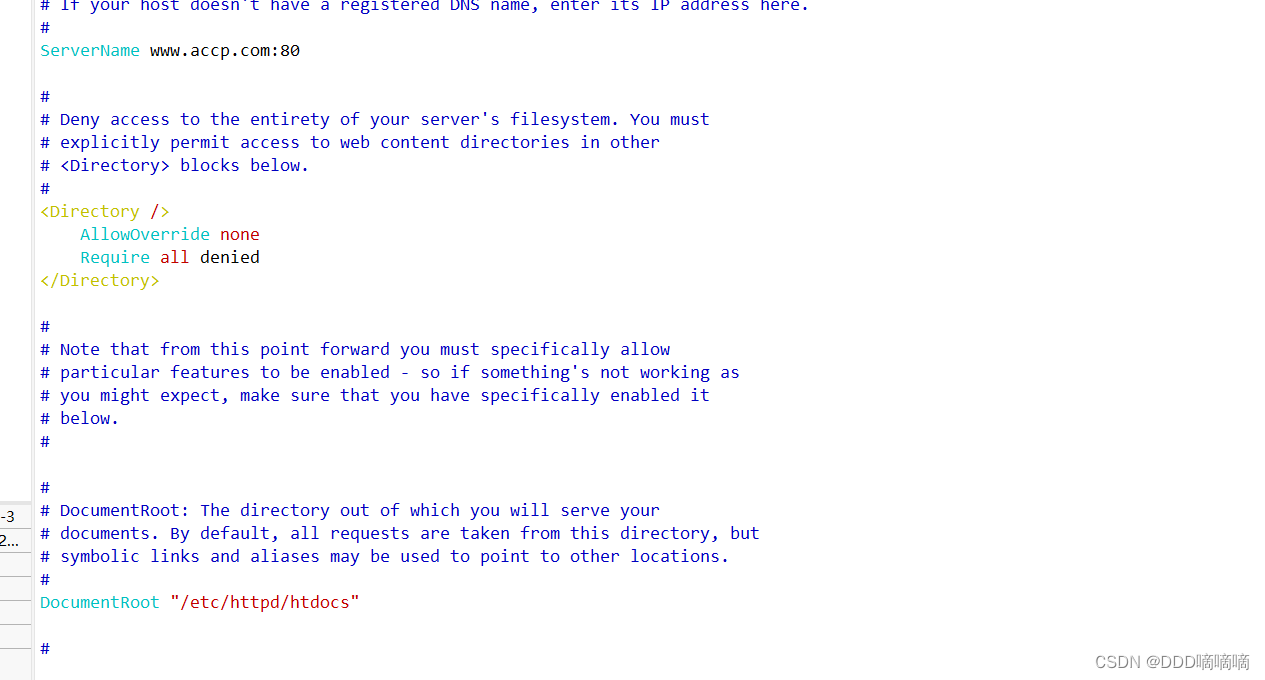
四、Tags模板
- 可以在一个playbook中为某个或某些任务定义“标签”,在执行此playbook时通过ansible-playbook命令使用–tags选项能实现仅运行指定的tasks。
playbook还提供了一个特殊的tags为always。作用就是当使用always作为tags的task时,无论执行哪一个tags时,定义有always的tags都会执行。
- name: serve play
remote_user: root
hosts: webservers
tasks:
- name: touch ddd,txt
file: path=/opt/ddd.txt state=touch
tags: #标签为ddd当命令tags标签为ddd,或者没有标签才执行
- ddd
- name: touch 123.txt
file: path=/opt/123.txt state=touch
tags:
- always #alwats表示都执行
- name: touch abc.txt
file: path=/opt/abc.txt state=touch
tags:
- aaa #同上
